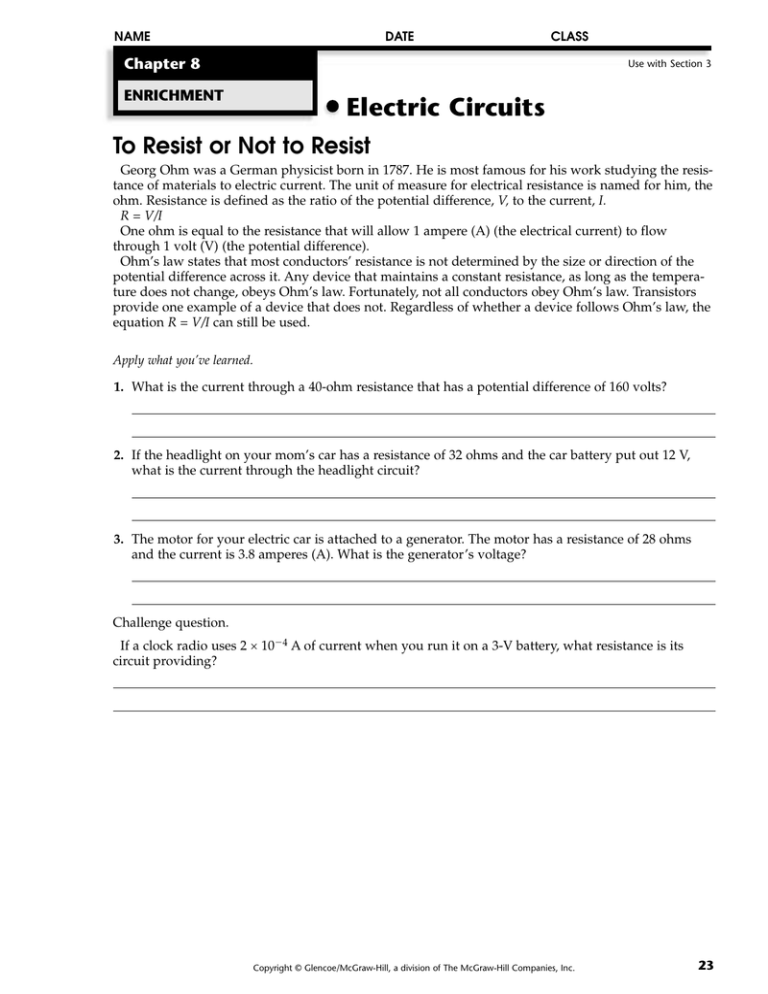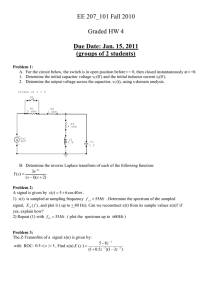Enrichment
advertisement

NAME DATE CLASS Chapter 8 Use with Section 3 ENRICHMENT Electric Circuits To Resist or Not to Resist Georg Ohm was a German physicist born in 1787. He is most famous for his work studying the resistance of materials to electric current. The unit of measure for electrical resistance is named for him, the ohm. Resistance is defined as the ratio of the potential difference, V, to the current, I. R = V/I One ohm is equal to the resistance that will allow 1 ampere (A) (the electrical current) to flow through 1 volt (V) (the potential difference). Ohm’s law states that most conductors’ resistance is not determined by the size or direction of the potential difference across it. Any device that maintains a constant resistance, as long as the temperature does not change, obeys Ohm’s law. Fortunately, not all conductors obey Ohm’s law. Transistors provide one example of a device that does not. Regardless of whether a device follows Ohm’s law, the equation R = V/I can still be used. Apply what you’ve learned. 1. What is the current through a 40-ohm resistance that has a potential difference of 160 volts? 2. If the headlight on your mom’s car has a resistance of 32 ohms and the car battery put out 12 V, what is the current through the headlight circuit? 3. The motor for your electric car is attached to a generator. The motor has a resistance of 28 ohms and the current is 3.8 amperes (A). What is the generator’s voltage? Challenge question. If a clock radio uses 2 × 104 A of current when you run it on a 3-V battery, what resistance is its circuit providing? Copyright © Glencoe/McGraw-Hill, a division of The McGraw-Hill Companies, Inc. 23







